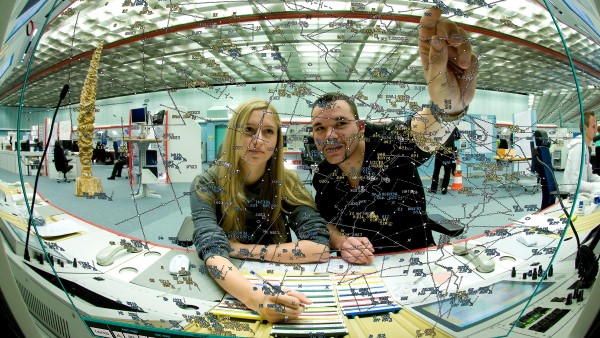Indra will reinforce air traffic safety throughout New Zealand’s skies with state-of-the-art radars
Indra, a leading global engineering technology company for the aerospace, defence and transportation sectors, has signed with New Zealand’s air navigation service provider, Airways New Zealand, to modernize the country radar network with state-of-the-art technology to strengthen air traffic security, increasing capacity and reducing CO2 emissions.
Indra is deploying a new Primary Surveillance Radar (PSR3D) and a Secondary Surveillance Radar (MSSR), located in Christchurch. Planning is underway on completion of the Christchurch site for a further two installations of radars for Auckland and Wellington. The project will also include building a brand new radar support tower at Christchurch.
On completion of the these projects, the company will have renewed New Zealand’s radar network with three primary 3D radars co-mounted and operating jointly with three secondary Mode S Monopulse Secondary Surveillance Radars (MSSR). The systems will replace legacy operating radars that are reaching the end of their service life.
Indra’s ATM Global Business Development Director, Enrique Castillo, said: “Airways New Zealand will have the latest technology for traffic handling, maximising safety as well as improving their environmental footprint. At Indra, we manufacture some of the world’s most advanced radar and air traffic systems and are very proud that a highly recognised air navigation service provider like Airways New Zealand, has chosen our technology, which consolidates our presence as a leading supplier of Navigation systems in the Oceania region, for both civil and military customers”.
The new systems incorporate state-of-the-art digital technology to ensure the most accurate view of air movements, thus facilitating much more efficient and safer flight management.
Three-dimensional radars are a novel technology in the civil aviation world, to which Indra has always been committed and is recognised as a pioneer. This type of radar stands out because it offers maximum reliability in detecting the aircraft's position; it does not depend on information sent by aircraft or on whether the aircraft's flight instruments are correctly calibrated. 3D primary radar detects and calculates the position of aircraft under adverse weather conditions, surface clutter, and natural and human interference. Therefore, they are particularly suitable for reinforcing surveillance on routes with heavier traffic or at large airports. In recent years, the company has implemented this technology in some of the world's busiest locations, achieving significant improvement in efficiency and safety.
The data collected by primary radars is in turn enhanced by cross-referencing it with information received by Indra’s MSSR, the most advanced of its class, with the ability to selectively interrogate and identify aircraft, which in turn cross-references information received from its ADS-B system, with data collected automatically from in-flight aircraft.
Radars and renewable energy
Indra’s radars also comply with the requirements set by Airways New Zealand for “sustainable” systems, a reduced energy consumption, which may operate in the vicinity of wind or solar farms, without hindering renewable energy production. The radars incorporate advanced algorithms developed by the company to mitigate effects on the signal caused by wind turbines and solar panels, coexisting without problems.
The project will take three years to complete and Indra will be supported by local industry, working together with a dynamic Airways team to replace the current radars and reinforce safety in New Zealand’s skies, for decades to come.


